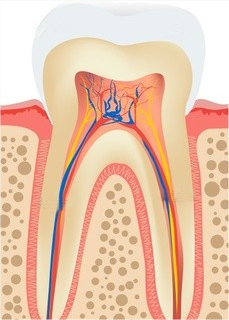


 Porcelain Veneers
Porcelain Veneers Teeth Whitening
Teeth Whitening Bonding
Bonding Tooth Colored Fillings
Tooth Colored Fillings Orthodontics
Orthodontics Gum Contouring
Gum Contouring Fillings
Fillings  On lays and Inlays
On lays and Inlays Crowns and Bridges
Crowns and Bridges Denture
Denture Extractions and Bone Grafts
Extractions and Bone Grafts Dental Implants
Dental Implants Periodic Checkups
Periodic Checkups Scaling and Root Planing
Scaling and Root Planing  Custom Night and Sports Guards
Custom Night and Sports Guards Snoring and Sleep Apnea
Snoring and Sleep Apnea Root Canal Treatment
Root Canal Treatment  Sealants
Sealants  Routine Checkup
Routine Checkup Fluoride Application
Fluoride Application Extractions
Extractions Space Maintainers
Space Maintainers Porcelain Fused Metallic Crown
Porcelain Fused Metallic Crown Dental Counseling
Dental Counseling Smile Makeover
Smile Makeover Neuromuscular Dentistry
Neuromuscular Dentistry Sedation Dentistry
Sedation Dentistry Laser Dentistry
Laser Dentistry Digital Dentistry
Digital Dentistry Relaxation Dentistry
Relaxation DentistryIf you have a stubborn case of gum disease, your dentist may recommend a dental procedure called dental scaling. This will remove plaque and tartar from your teeth and help your gums regain health. The scaling process is usually done in conjunction with a procedure known as root planing.
During the teeth scaling process, your dentist or dental hygienist will numb the gums and tooth roots with a local anesthesia, but teeth scaling and root planing cause very little discomfort. Your dentist or dental hygienist will use specialized tools to remove the hardened deposits of plaque buildup (tartar) from the teeth both above and below the gum line. Root planing involves smoothing rough spots on the roots of the teeth that can promote gum disease by trapping and holding bacteria.
The whole procedure may be done in a single visit, although generally a quadrant (1/4th of the mouth) or half of the mouth is recommended per appointment. After a scaling and planing, you can expect that your gums will be numb from the anesthesia and then possibly a little tender. But if you maintain a consistent oral health routine of twice-daily tooth brushing and daily flossing, your gums should quickly regain a firm, healthy, pink appearance.
Be sure that your dentist or dental hygienist knows your total health history before he or she performs a scaling and root planing procedure. The procedure can introduce bacteria into the bloodstream, so precautions may need to be taken to treat gum disease in people who are at increased risk for infections, such as those with heart problems, liver disease or a compromised immune system due to an illness, such as HIV.
Scaling and root planing, otherwise known as conventional periodontal therapy, non-surgical periodontal therapy, or deep cleaning, is the process of removing or eliminating the etiologic agents – dental plaque, its products, and calculus – which cause inflammation, thus helping to establish a periodontium that is free of disease.
Dental plaque is a biofilm, usually a pale yellow, that develops naturally on the teeth. Like any biofilm, dental plaque is formed by colonizing bacteria trying to attach themselves to the tooth's smooth surface. It has been speculated that plaque forms part of the defense systems of the host by helping to prevent colonization of microorganisms that may be pathogenic.
The oral cavity contains the only known anatomical aspect of the human body that does not have a regulated system of shedding surfaces: the teeth. This allows microorganisms to adhere to the surface of teeth for long periods of time. These multiple species of bacteria become dental biofilm. Dental biofilm, more commonly referred to as dental plaque, is composed of about a thousand species of bacteria that take part in the complex ecosystems of the mouth. The natural, non-frequent regulation of tooth shedding plays a large role in making dental biofilm the most diverse biofilm in the human body despite the relatively small size of the teeth.
The human oral cavity is also called the human oral microbiome. This is because the human oral cavity can contain several environments at a given moment that could vary from tooth to tooth. Additionally it has been estimated that 25,000 species of bacteria reside in the mouth. This is in contrast to the previously estimated 700+ species. Studies have found that out of the 25,000 species that exist in the oral cavity, about 1,000 species can exist as part of the dental biofilm ecosystem. This is also in contrast to the previous estimate of more than 500 species as part of the dental biofilm. These 1,000 species have the ability to change their environment through a series of biotic relationships.
At first, the biofilm is soft enough to come off by using the fingernail. However, it starts to harden within 48 hours, and in about 10 days the plaque becomes dental calculus (tartar), which is hard and difficult to remove.
Dental plaque can give rise to dental caries (tooth decay)—the localised destruction of the tissues of the tooth by acid produced from the bacterial degradation of fermentable sugars and periodontal problems such as gingivitis and chronic periodontitis.
Plaque is a haven for oral micro-organisms and continues to build up in the oral cavity until it can mineralize in to calculus (also known as tartar) or cause plaque associated gum disease.
Plaque detection is usually detected clinically by plaque disclosing agents. Disclosing agents contains dye which turns bright red to indicate plaque buildup.
Plaque is a structured resilient yellow-grayish substance that adheres tenaciously to the tooth surfaces including removable and fixed restorations. It is an organised bio-film that contains primarily bacteria in a matrix of glycoproteins and extracellular polysaccharides. This matrix makes it impossible to remove the plaque by rinsing or using sprays. Materia alba is similar to plaque but it lacks the organized structure of plaque and hence easily displaced with rinses and sprays. When this plaque gets mineralized it forms into calculus. Calculus is thus the hard deposit formed by mineralization usually covered by a layer of unmineralized plaque.
Because the bone is alive, it has cells in it that build bone, and cells that break down bone. Usually these work at the same speed and keep each other in balance. This process is known as bone remodeling. The chemical by-products of ongoing inflammation stimulate the cells that break down bone, which now start working faster than the cells that build bone. The net result is that bone is lost, and the loss of bone and attachment tissues is called periodontal disease.
Current treatment for periodontitis involves scraping dental plaque, the polymicrobial biofilm, off the tooth, a procedure called scaling. Root planing involves scaling the tooth’s root. Scaling and root planing are often referred to as deep cleaning.
The objective for periodontal scaling and root planing is to remove dental plaque and calculus (tartar), which house bacteria that release toxins which cause inflammation to the gum tissue and surrounding bone. According to Brentwood periodontists, Dr. Alina Krivitsky and Dr. Alexandre Aalam, scaling and root planing is one of the most effective periodontal methods of treating gum disease before it becomes severe.
However, according to the Evidence-Based Dentistry website, the Cochrane Oral Health Group in 2005 found two relevant studies, with neither showing any clinical benefit to scaling. In 2013 the Cochrane Oral Health Group examined three new studies. The most pertinent study found no benefit for regular scaling treatments when compared to a no-scale regimen.
Also, cleaning pockets deeper than 2mm is difficult, and the deeper the pocket, the harder it is to clean effectively. Since a periodontal pocket is defined as 4mm or more, scaling and root planing are ineffective at cleaning the deep pockets associated with periodontitis. Thus, the deep cleaning that scaling and planing is supposed to provide is not deep at all, and probably has little impact, if any, on gum disease.
Because in periodontal disease pockets form that are deeper than the usual gingival depth, such scaling and root planing are often referred to as deep cleaning, and may be performed using a number of dental tools, including ultrasonic instruments and hand instruments, such as periodontal scalers and curettes.
Removal of adherent plaque and calculus with hand instruments can also be performed prophylactically on patients without periodontal disease. A prophylaxis refers to scaling and polishing of the teeth in order to prevent oral diseases. Polishing does not remove calculus, but only some plaque and stains, and should therefore only be done in conjunction with scaling.
Often, a device may be electric, known as an ultrasonic or sonic scaler. Ultrasonic scalers vibrate at a frequency that breaks down bacterial cell membranes and removes both plaque and calculus. Hand instruments are used to complete the fine hand scaling that removes anything the ultrasonic scaler left behind.
Sonic and ultrasonic scalers are powered by a system that causes the tip to vibrate. Sonic scalers are typically powered by an air-driven turbine. Ultrasonic scalers typically use either magnetostrictive or piezoelectric systems to create vibration. Magnetostrictive scalers use a stack of metal plates bonded to the tool tip. The stack is induced to vibrate by an external coil connected to an AC source. Ultrasonic scalers also include a liquid output or lavage, which aids in cooling the tool during use, as well as rinsing all the unwanted materials from the teeth and gum line. The lavage can also be used to deliver antimicrobial agents.
Although the final result of ultrasonic scalers can be produced by using hand scalers, ultrasonic scalers are sometimes faster and less irritating to the client. Ultrasonic scalers do create aerosols which can spread pathogens when a client carries an infectious disease. Research shows no difference in effectiveness between ultrasonic scalers and hand instruments. Of particular importance to dentists themselves is that the use of an ultrasonic scaler will greatly decrease their likelihood of getting carpal tunnel syndrome (or other similar forms of RSI)
Surprisingly, the mechanism of action underlying the operation of ultrasonic scaler on microscopic scale is somewhat controversial. Recent contributions claim that ultrasonic scalers generate acoustic cavitation in the medium surrounding the teeth. The collapsing bubbles involved in the process emit shock waves that strike and degrade the plaque layer. Since cavitation cannot occur in a dry environment, it comes out that the role of the liquid output of the ultrasonic scaler during its operation is far more essential than cooling and rinsing; the presence of water, or better a mixture of water and air, enables the process to occur.
As noted in the Periodontal scaling section above, there is little scientific evidence to indicate that scaling is an effective procedure. The Cochrane Oral Health Group, part of an independent nonprofit organization formed to encourage the practice of scientific evidence-based medicine, found little support for the idea that scaling is an effective treatment for periodontal disease in either their 2005 or 2013 reports.
Also, the procedure does carry certain risks, including the potentially life-threatening risks of bacteremia (bacteria in the bloodstream) and endocarditis. "Scaling is an invasive procedure and associated with a number of adverse effects including damage to tooth surfaces and tooth sensitivity."
However, the dental profession currently insists that scaling and root planing are the basic treatments for periodontal disease, in spite of the evidence to the contrary. There is little research into why this is the case. According to Kenneth Prager, professor of clinical medicine at Columbia College of Physicians and Surgeons, "Money has an insidious way of biasing medical judgment. When [providers] profit from every procedure, it is too easy for some to justify it as in the patient’s best interest even when sound clinical judgment argues the contrary."
Many dentists still believe that scaling may be the only treatment required to treat mild cases of periodontitis. It may also be considered the initial therapy prior to future surgical needs. For the procedure to be considered effective, the patient must be able to be maintained at a level of periodontal health that will prevent reinfection with periodontal pathogens. This requires optimal home care and ongoing periodontal maintenance therapy, usually every three to four months to sustain health.
It is effective only when certain conditions are fulfilled. A complete removal of calculus from the periodontal pockets using hand and ultrasonic instruments is not totally effective. The depth of the pocket, when identified by the probe, exceeds more than 3mm then calculus removal becomes more insufficient. The maximum access of a probing instrument is up to 6mm, any calculus beyond that can't be reached. If there is calculus exceeding more than 6mm, then scaling and root planing are ineffective and the best treatment option in such cases will be surgical access for complete pathogen and calculus free area.
The probing depth and methods affects the success of the procedure, and factors like root grooves, concavities, and furcation involvement may limit visibility of underlying deep calculus and debris. In severe periodontal disease where there is a systemic involvement, scaling and root planing are insufficient and surgery is required. Scaling and root planing are ineffective in cases where tooth mobility is severe; such conditions require periodontal surgery and placement of bone grafts.
Root planing and scaling is one of the most effective ways to treat gum disease before it becomes severe. Root planing and scaling cleans between the gums and the teeth down to the roots. Your dentist may need to use a local anesthetic to numb your gums and the roots of your teeth.
Some dentists and dental hygienists will use an ultrasonic tool for the planing and scaling. This tool is not as uncomfortable as a standard scraping tool, but not all cleanings require this type of tool.
Your dentist may place antibiotic fibers into the pockets between your teeth and gums. The antibiotic will help speed healing and prevent infection. The dentist will remove the fibers about 1 week after the procedure.
If anesthesia is used, your lips and gums may remain numb for a few hours. Planing and scaling causes little or no discomfort.
Root planing and scaling is done when gums have either started to pull away from the teeth or the roots of the teeth have hard mineral deposits (tartar) on them.
If you maintain good dental care after the procedure, the progression of gum disease should stop. And your gums will heal and become firm and pink again.
Root planing and scaling can introduce harmful bacteria into the bloodstream. Gum tissue is also at risk of infection. You may need to take antibiotics before and after surgery if you have a condition that puts you at high risk for a severe infection or if infections are particularly dangerous for you. You may need to take antibiotics if you:

